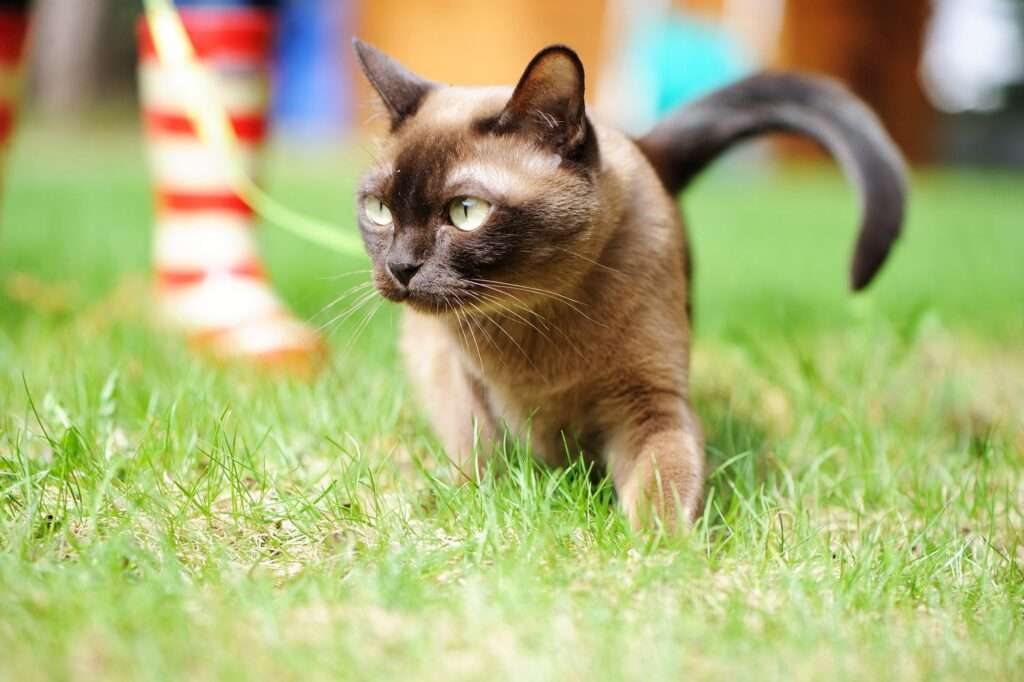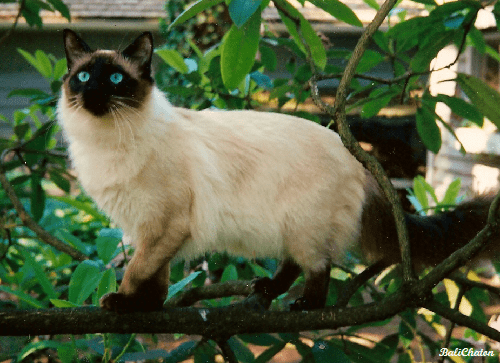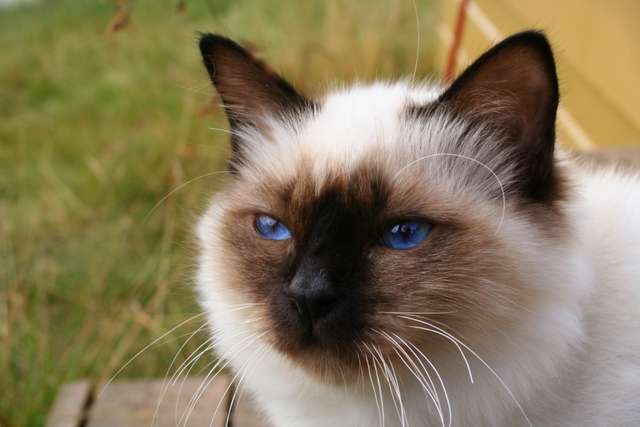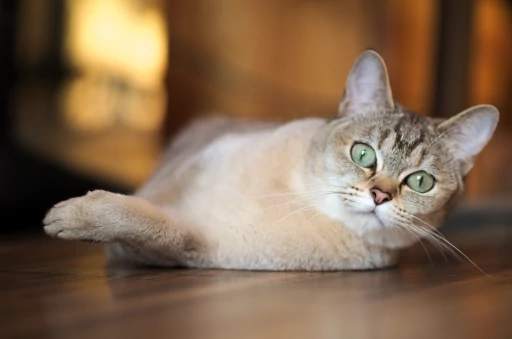
Description
Size: 6-14lbs
The Burmese is a medium-sized cat, but it is heavier than it seems when picked up. It is a stocky, compact cat with a lot of muscle and strong boning. The head is spherical, as are the tips of the chin, the eyes, ears, and even the feet. This breed is strong and sturdy in both appearance and feel.
The Burmese have a short, lustrous coats. In kittens, deeper coloring on the points may be noticed, but this shading fades with age, providing richness in any of the acceptable tones. Most associations will only recognize Burmese in the four classic shades of sable, blue, champagne, and platinum.

Behavior
Activity Level: Moderate
Social needs: Likes human company, also enjoy being with other pets
The Burmese cat is an energetic and lively cat that adores humans. When it isn’t displaying its athletic abilities by leaping to the highest point in the room, it is cuddling on a lap or conversing in a scratchy, rumbling, and gentle voice. It is a cheerful kid’s companion. The Burmese will follow you around your house because they love to get attention. He dislikes being left alone for prolonged periods of time. They get along nicely with other pets, while female Burmese may be dominating and may struggle with another domineering animal in the house.
Origin/History
The Burmese breed, which has its origins in Burma, became well-known in the UK around 1800, but it eventually became dead because of competition from the Siamese, who were marked considerably louder and more conspicuous.
Dr. Joseph C. Thompson brought a cat named Wong Mau from Burma to the United States in 1930. This cat had a deep chocolate tone, and many fans assumed she was a very dark Siamese. Dr. Thompson disagreed, therefore he and other like-minded breeders chose to breed Wong Mau to identify her exact breed. Wong Mau was the forefather of the Burmese breed.
Care as a Pet
The short, fine, and glossy coats of burmese cats have a velvety sheen. They shed little and need little grooming. Once a week brushing your cat with a rubber brush should be sufficient to remove dead hairs and maintain the coat looking shiny.
Maintaining your cat’s activity level is also crucial. Burmese are cheerful and vivacious animals who thrive in active households with people who enjoy playing with and spending time with their pets. These cats are very trainable and like engaging activities.
Nutrition and Diet
These cats need a lot of protein and nutrients to support their active lifestyle. To make sure all of your cat’s needs are being fulfilled, it is always wise to review diet alternatives with your veterinarian. High-quality dry food promotes dental health and can be combined with wet food to provide additional moisture.
The National Alliance of Burmese Breeders advises that it’s crucial to occasionally vary brands of cat food so your furry buddy doesn’t become used to eating only one sort in order to avoid your cat developing a fussy eating disorder.
Grooming needs
The Burmese’s smooth coat sheds little and is easy to care for with weekly brushing. Regular nail cutting and ear washing are the only additional grooming requirements.
Table





